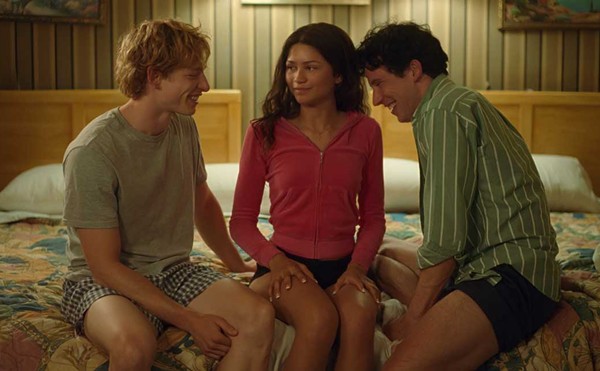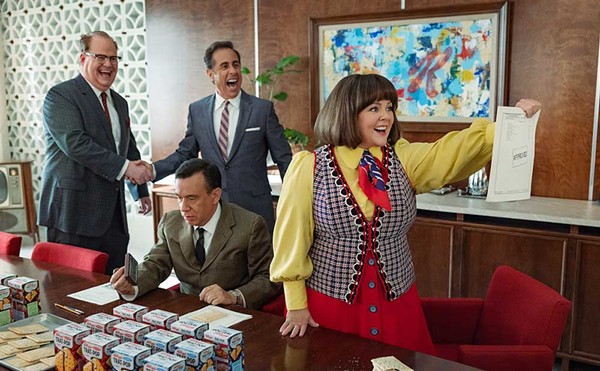Cyclist gives Slow Roll kiss-off in Belt magazine essay
[
{
"name": "GPT - Leaderboard - Inline - Content",
"component": "35519556",
"insertPoint": "5th",
"startingPoint": "3",
"requiredCountToDisplay": "3",
"maxInsertions": 100
}
]
Is there anybody who doesn't love Detroit's Slow Roll? That procession of bicyclists of all skill levels that can draw thousands on warm Monday nights? They’ve garnered praise from local media, thanks to the ride's wide appeal, welcoming everybody from inner-city cyclists to suburban riders, who’d drive into the city with their bikes on roof racks and then join a tour showing off little-seen treasures, not just hip restaurants and bars but neighborhood projects and community gardens. It has been seen as a fun way to bridge the city’s divides between urban and suburban, black and white, speed bikers and freewheelers. It’s been crediting with doing everything from challenging a car-centric culture to helping bolster democracy.
It has inspired a host of Slow Roll rides in other cities, in Chicago, Buffalo, Malmö, Sweden, and Berlin.
All of this puts Slow Roll in an unusual position, having grown into the largest weekly ride in Michigan, drawing thousands of cyclists onto the streets. Nobody is questioning that they’ve become a huge success. But in some ways, they’re also victims of that success.
Those problems had been noticed at least two years ago, with organizers hoping to keep permitting at bay as long as they could. There was also some minor controversy this spring, when Slow Roll switched to a membership model to help fund insurance and permitting requirements. Although the group insisted nobody would be turned away, meeting city requirements became a complicating factor for the formerly free-and-easy ride.
What’s more, even with permitting and insurance, some city residents are routinely annoyed by the ride on Monday nights, as Slow Rollers can paralyze all other forms of transportation while they creep by. As ambassadors to the city, their record is mixed.
One city resident complains, "My 15-minute drive from downtown to Hamtramck took me 45 minutes. It's goddamn nightmare. Their smug faces, smiling and waving. I was fucking two minutes from grinding them into the pavement."
Another resident says, "The best is when I get out of work and want nothing more than to drink a beer but get stuck in the parking structure for 45 minutes because these assholes close the street down that I exit on."
We even poked a bit of fun at the ride in our Motor City Emojis issue, saying, "Depending on who’s talking, the Slow Roll is a Monday night group bicycle ride that helps introduce thousands of riders to the city, or it’s a way for suburban cyclists to meet each other in the city while jamming up the motorists who live there."
All this is not a slam on Slow Roll. It remains a wonderful experience for people, now all over the world. But any reasonable person would have to admit that a lot has happened since the organization started to evolve from its organic roots five years ago. As organizations grow, they change. It’s all part of a natural process. And the chorus of frustrated voices suggests organizers should acknowledge what has changed and find better ways to deal with it. A hundred riders stopping a motorist for two minutes can ease cyclist-motorist tensions, just as surely as 4,000 riders stopping a motorist for 30 minutes can push those tensions to the breaking point. What's more important? Unchecked organizational growth, or creating a culture in which bicycles and cars can co-exist?
We bring it up because at least one Slow Roller has decided to drop out, and not quietly or privately. That rider, John G. Rodwan Jr., penned a 2,000-word-plus article published by regional online magazine Belt. In it, he tells what drew him to the ride and why he won’t be joining them anymore. He makes many of the points the ride’s critics have made, in a much more polite manner. Excerpts include:
When Slow Roll changed from being just a bike ride, albeit a very crowded one, to a membership organization, I had to think about whether this was I group I wanted officially to join. Did I want to inch along in rides that could take up to two hours to go ten (or fewer) miles? Did I want to be constantly on the lookout for distracted or inconsiderate riders as they weaved about the streets? Did I want to declare myself a part of a group that included small but hard to miss contingents who’d blast loud music even as they went down otherwise quiet residential streets, or who’d ignore instructions to stay to the right side of the road and behave as if the sheer size of Slow Roll meant they could ignore the rules of the road? Once police rather than unauthorized volunteers started to hold back traffic at intersections, did I want to be part of a mass that could, for a half an hour or more, interfere with drivers just trying to get home from work, for the sake of an excruciatingly slow ride to nowhere? ...
Slow Roll, deliberately or not, does get in motorists’ way, and does little to help cyclists and drivers learn how to coexist safely. I know people who hate Slow Roll, and I worry that some of their annoyance extends even to cyclists who share their concerns about traffic disruptions. ...
An educational opportunity is being missed: the standard hand signals both bicyclists and drivers should know in order to communicate with each other could be taught to riders who didn’t already know them. I don’t know that I ever saw any ride leaders use the proper signal for stopping (left arm out, elbow bent ninety degrees with the hand pointing downward); instead, I frequently saw them put their left fists in the air, which looks a lot like the signal for turning right (left arm out, elbow bent ninety degrees with the hand pointing upward). The confusion was passed along: I saw folks start to use these same mixed signals on rides other than Slow Roll. Those who paid attention in drivers’ ed couldn’t be blamed if they didn’t know what the hell cyclists using Slow Roll sign language were trying to say. ...





